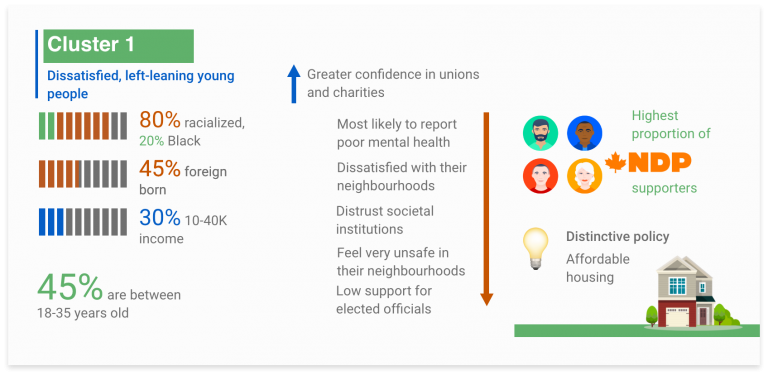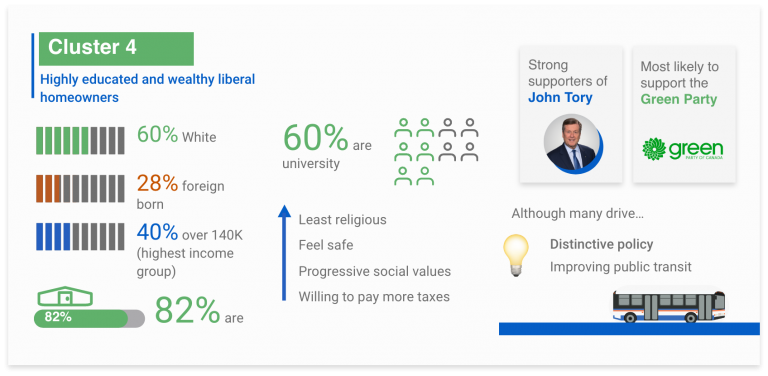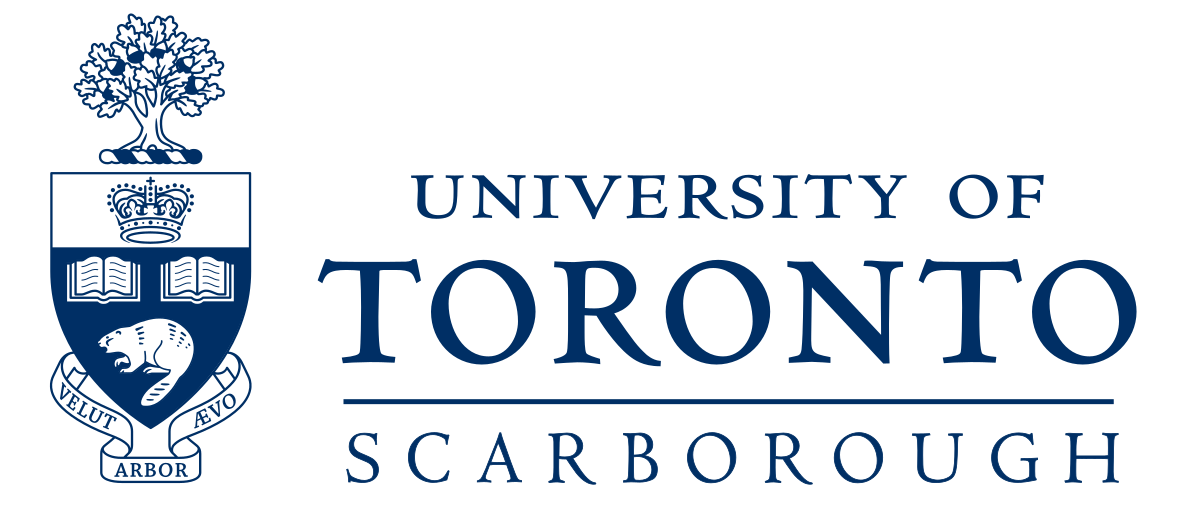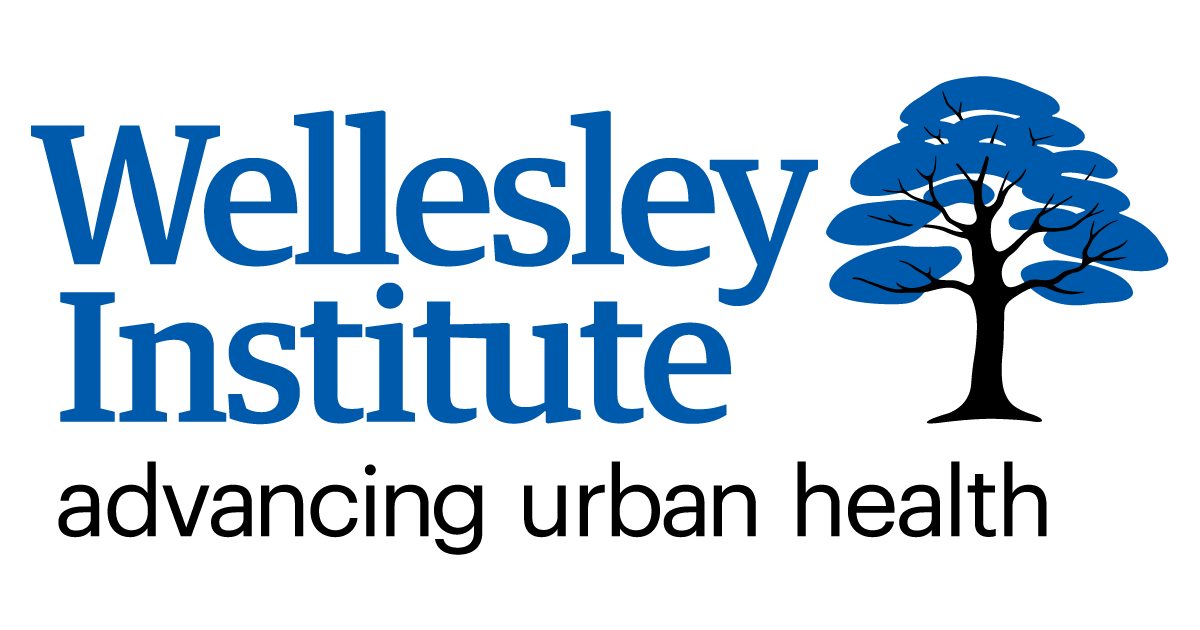Five types of Toronto inner suburban residents
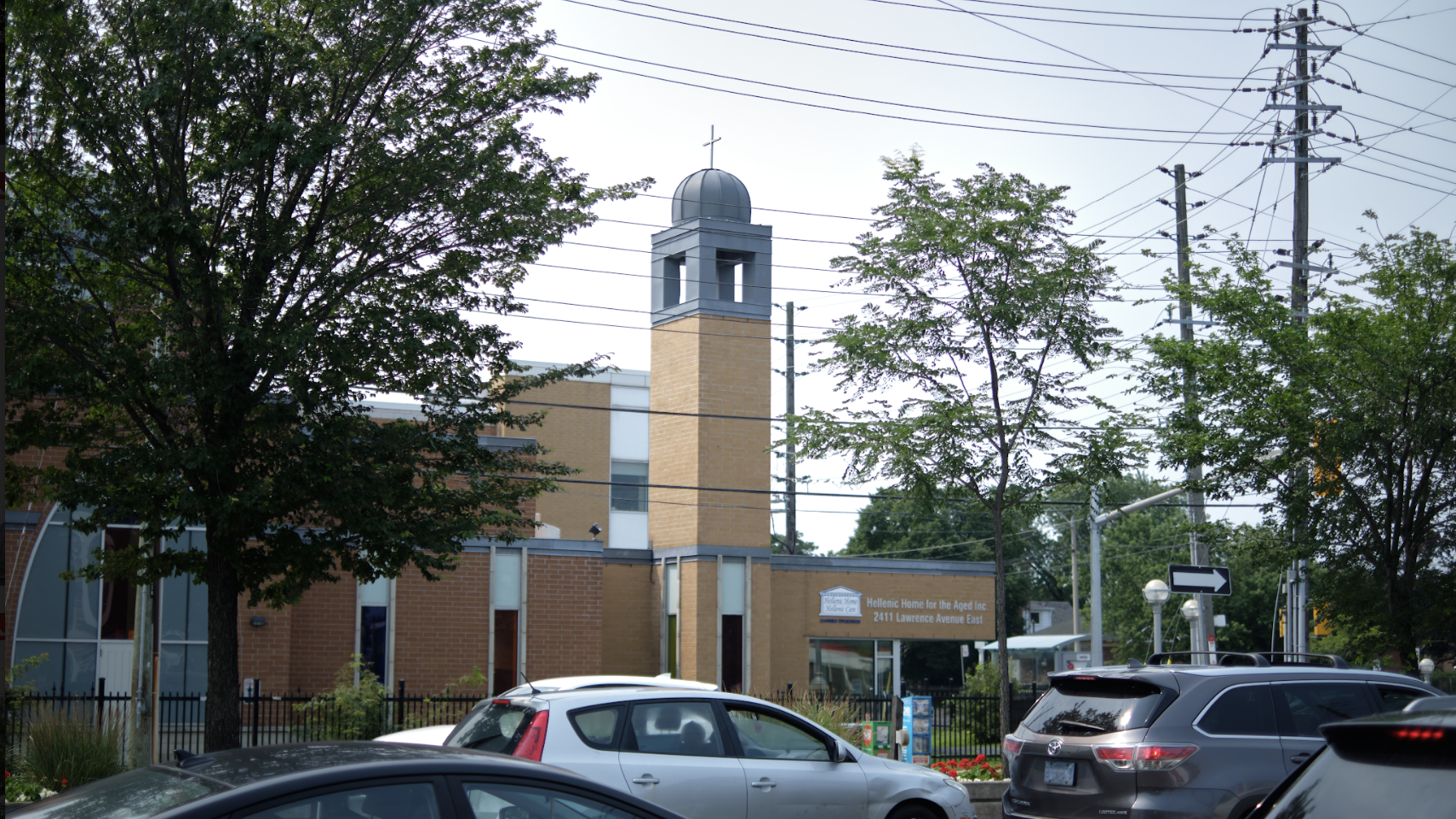
These results suggest taking a more holistic approach to understanding the basis of residents’ perceptions and priorities of their neighbourhoods. Individuals are complex, and cannot be reduced to any single attribute. Therefore, to understand diverse sources of residents’ views, we used statistical techniques to identify five clusters of respondents. Broadly speaking, these clusters identify respondents who tend to answer different questions in a similar way. They show major axes along which individuals differ from one another, and help to determine the most important sources of those differences.
The 5 clusters broadly follow the intertwined lines of class and race, with two lower income groups (average annual family incomes between $50-60,000), a middle income group (average family income around $65,000), and two upper income groups (around 110k and 190k, respectively). 75 to 95% of the three lower and middle income groups are members of racialized groups, while racialized persons comprise about 40% of the upper income clusters. All clusters are around the same size, with the exception of cluster 2, which is the largest and about twice as big as the others.

Cluster 1 could be described as dissatisfied, left-leaning young people. Residents in this cluster are predominantly young (45% between 18-35 years old), lower income (45% have 10-40k family income), racialized (80%; 20% Black). Around 45% were born outside Canada, and most (75%) live in high rises. This group tends to be dissatisfied with their neighbourhoods overall (only rating it around 5 on a 10-point scale) and distrust societal institutions, especially police and schools, though they show greater confidence in unions and charities. Only 25% believe that people help each other out in their neighbourhoods, and relatively few feel their neighbourhood receives enough attention from city hall. They feel very unsafe in their neighbourhoods (around 75% feel very unsafe or a little unsafe) and are the most likely to report “poor” mental health. Almost none are Conservative Party supporters, and this group contains the highest proportion of NDP supporters and those with no political affiliation. They show relatively weak support for elected officials at all levels of government, but especially for Premier Doug Ford. Housing costs were the #1 issue for over 40% of this group, the highest priority of any issue for any group, though they also prioritized social programs (e.g., job training, newcomer programs, etc.).
Cluster 2, the largest cluster, could be characterised as hopeful, trusting new Canadians. Residents in this cluster are also relatively young and lower income; 95% are members of racialized groups (40% South Asian), most live in high rises, 85% are foreign born (the highest of any cluster), and on average they have lived the least amount of time in their neighbourhoods. Many have children at home. The most distinctive feature of this group is a general lack of awareness regarding neighbourhood services and amenities. At the same time, they show strong confidence in institutions, though they have relatively less trust in charity organsations. They tend to believe their neighbourhoods are moving in the right direction, that neighbours help each other out, and that city hall is providing good services and appropriate levels of attention to their neighbourhoods. They are relatively satisfied with all political leaders, but are most likely to be Liberal Party supporters. Reducing housing costs and improving local schools are the top policy priorities for this group.
Cluster 3 could be described as well-connected, racialized middle class. Over 50% are in the middle-income bracket and 60% are over 50 years old. Around two-thirds are foreign born, 75% are racialized (28% South Asian, 15% Black). Over 50% are homeowners, and nearly 60% have lived in their neighbourhood for over 10 years. These residents stand out as the most likely to be “very satisfied” with their local amenities and services, to think neighbours help each other out (80%), to believe that their neighbourhood is moving in the right direction (nearly 60%), and to feel very safe (nearly 60% report feeling “very safe”). They are strong Liberal Party supporters, and show especially high support for Mayor John Tory and Prime Minister Justin Trudeau. They have the highest match between their perception of their neighbourhood and the local ideal, the greatest confidence in institutions (especially city hall), and are very satisfied with city services and the attention their neighbourhoods receive. These residents have very good self-reported health, the shortest commute times, and are the most likely to get around by walking. Reducing housing costs and improving health care tend to be their top policy priorities.
Cluster 4 could be characterised as highly educated and wealthy liberal homeowners. This is the highest income group (40% over 140k) with the most homeowners (82%) and university graduates (60%). Around 60% are white and a similar proportion live in higher SES neighbourhoods (Cliffcrest and Edenbridge). These residents stand out in affirming the most progressive social values, being the least religious, the most likely to support the Green Party, being relatively trusting of city hall, and the most likely to call their neighbourhood by its official name. They are strong supporters of Mayor Tory. They are also the least likely to feel unsafe at night. Although they are heavily reliant on their cars, their top policy priorities relate to transit; they strongly support improving public transit and road maintenance, and are especially likely to be willing to pay greater taxes to improve public transit. They are also the most likely to prioritise supporting local businesses.
The final cluster could be described as conservative leaning, older homeowners. This cluster has the highest number of seniors (about 50% are over 65), 80% of whom are homeowners, and about 60% white residents. This cluster is the most evenly spread across all our study areas and has on average been living in their neighbourhoods the longest. They stand out most as the most likely to identify as Christians, as Conservative Party supporters (about 50%), and to espouse old fashioned/traditional social values. They are very dissatisfied with Justin Trudeau and relatively satisfied with Doug Ford. They show relatively less confidence in institutions, especially in city hall and unions, but are most trusting of the police. They rarely use public transit (nearly 60% do so “hardly ever”) and are the most likely to prioritise road maintenance as a policy priority. They are the least likely to support raising taxes to increase government investment in their top ranked policy priority areas.
Altogether, identifying these clusters provides a window into the range and basis of inner suburban residents’ outlooks about their city and communities. There is no single voice of these communities, but a range of voices, and policy makers must take care to seek out and acknowledge all of them.

